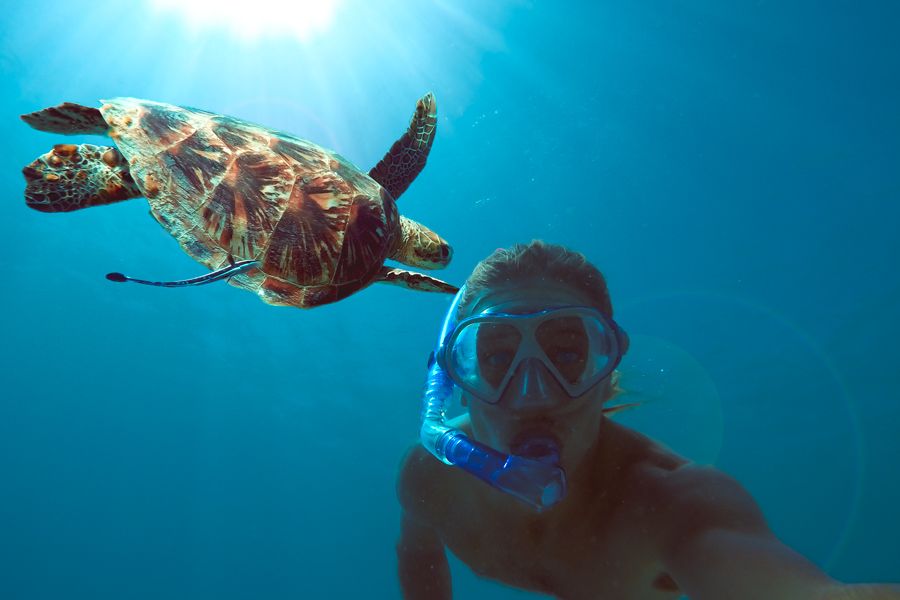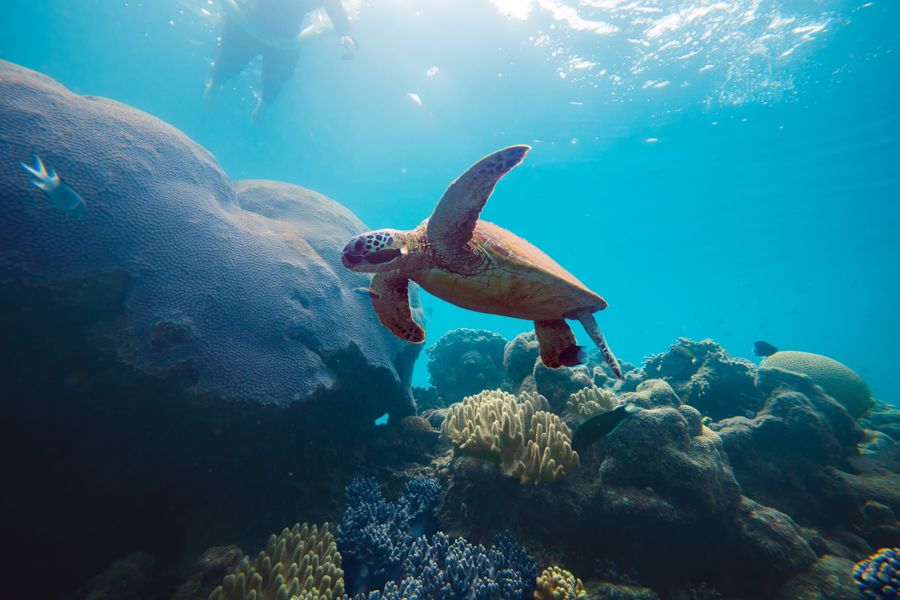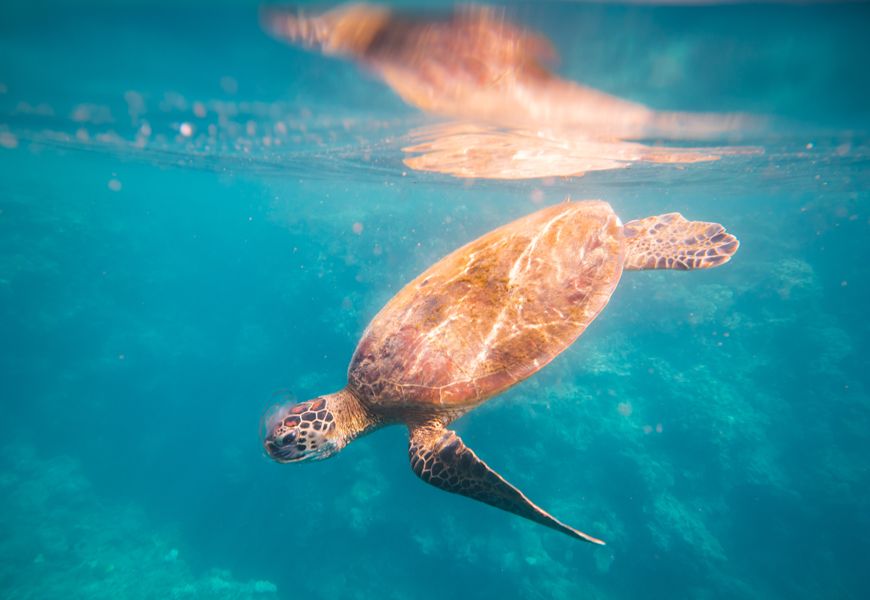Green Turtles Whitsundays

Whitsunday Green Turtles
Green turtles are one the largest turtle that visits the Whitsundays. The aboriginals knew that when you cooked a green turtle their fat turned an unusual bright green. This is how the name was derived. Green sea turtles are abundant in the Whitsundays and never cease to be an amazing site to see for snorkellers, scuba divers and above-water observers alike. They effortlessly cruise underwater, seemingly surfacing every few minutes for fresh air. But don't let them fool you, these amazing creatures can move very fast through the water when they want to. Small yet powerful flippers propel these ancient animals around the ocean currents. If you are lucky enough to swim with any turtle we guarantee it will leave a lasting impression. A mature green turtle can grow to a carapace length of more than one metre and weigh on average 150kg. Their green fat, from which they get their name, is created by their diet of green sea grass.

Habitat and distribution
Green turtles occur in seaweed-rich coral reefs and inshore seagrass pastures in tropical and subtropical areas of Australia. Large numbers of green turtles occur in suitable feeding areas along the south-west coast of the Gulf of Carpentaria. The entire Great Barrier Reef area is an important feeding area for turtles which nest locally, as well as for those which nest in other regions or countries. They are frequently seen in the Whitsundays on both the coral reefs and seagrass pastures, such as those in Tongue Bay.
Behaviour and life history
Green turtles nesting along the Western Australia coast migrate from feeding grounds in Indonesia, Queensland, Northern Territory and Western Australia. They make long migrations between feeding grounds and nesting beaches, often returning to the same beach each year to nest. Migrations recorded from nesting beaches in the southern Great Barrier Reef have exceeded 2600km but the average migration is about 400km.

Nesting
Nesting occurs between late November and January in southern Queensland. It takes a female green turtle 30-40 years to reach maturity, whereupon she will start mating and nesting. In general, female green turtles lay about 115 round, ping-pong ball sized, parchment-shelled eggs, per clutch. Each nesting season she may return to the beach to nest an average of five times at fortnightly intervals.












